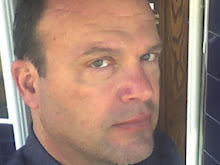Pure photography is defined as possessing no qualities of technique, composition or idea, derivative of any other art form.
- The f/64 Group, ca. 1932Weston's contact prints in 4x5 or 8x10 of bell peppers, female nudes, shells, sand dunes, and even toilets, have a stark beauty and implicit theology of immanence that calls to mind Blake's Auguries of Innocence:
To see a World in a Grain of SandMundane objects (not that the nudes are mundane) reveal and contain the beauty of all things. The kingdom of heaven is within you, says Jesus, in the Gospel of Thomas, says Edward Weston, in his photographs.
And a Heaven in a Wild Flower,
Hold Infinity in the palm of your hand
And Eternity in an hour.
I chose The Flame of Cognition as homage to Weston (and Ansel Adams, Imogen Cunningham, Willard van Dyke, Brett Weston, et al.), but also as a point of departure. I hope in this body of work to present images that are challenging, interesting, moving, and even pretty, while frustrating the habit of the viewer to recognize an object represented as a photograph.
I took many years for me to learn to attend to how I felt when standing before a work. Even now, I cannot say that I really "like" the music of John Coltrane, or the paintings of Jackson Pollock. But I feel amazingly good listening to Coltrane, especially if I don't listen too hard. And if I can let myself relax and dilate, I find that Pollock's paintings do the same for me.
My first working title for the work was Embracing the Blur, because the images were captured under conditions which frustrated all attempts to produce images that had some reasonable depth of focus, and were free from motion blur. There really wasn't enough light to work without a tripod, and a tripod would have been very disruptive in the space, which was small but public. When I finally gave up and embraced the blur, deciding on long, hand-held exposures, intentionally moving the camera in a linear or radial fashion, I enjoyed the play of light and color. Some of the images were immediately compelling, and others made me return for further attempts. I even bought an expensive full-frame, VR (vibration reduction) lens for my Nikon digital SLR - still clinging a bit to my original project. And still there was not enough light for handheld pictures, at least not if I hoped for clarity. And so I once again embraced confusion and gave up clarity. It started getting fun. Over the course of three months I made a total of four photo excursions to shoot the material.
One of the things I've observed is that people really differ in which images they respond to, which they favor over others. I'd love to know if there's a particular image that moves you, and what you think of it and how it makes you feel. And even what if reminds you of, though I am not qualified in the Rorschach protocol, and think it's a load of bollocks. ;-)
- M




